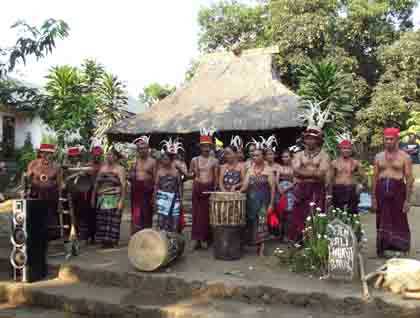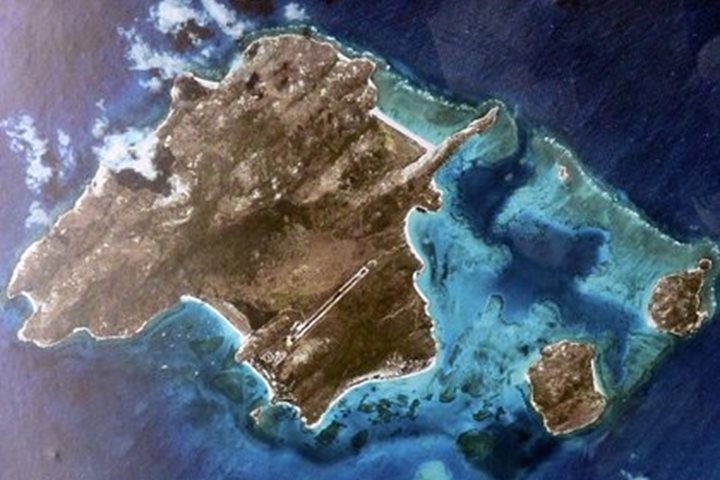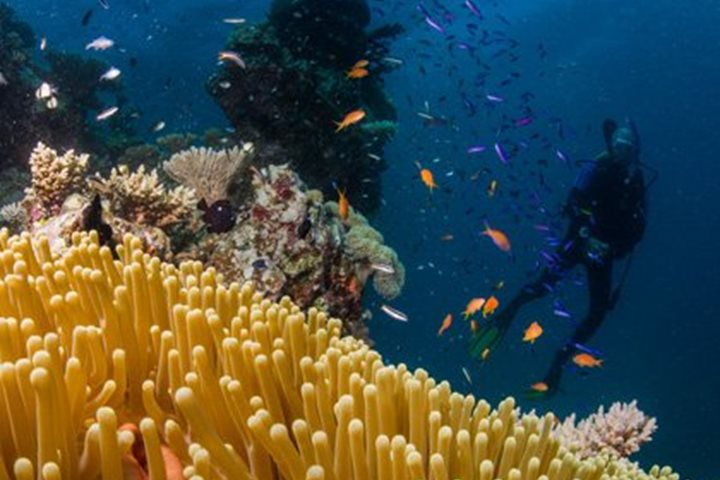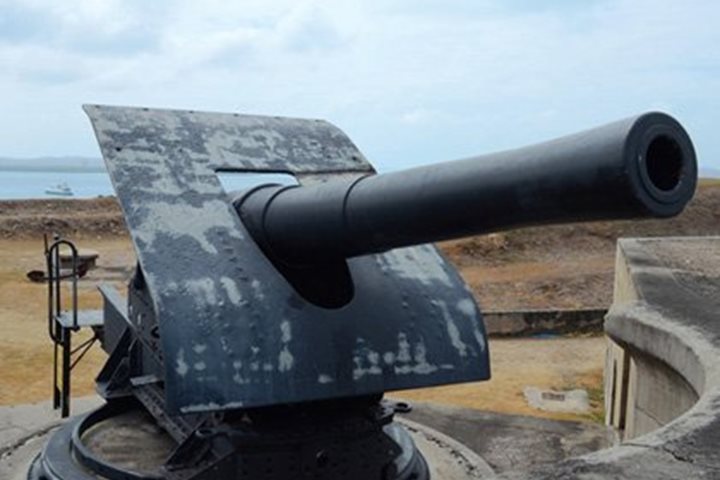We got off to a great start this morning with glass-smooth seas. Our ship had spent the entire night cruising off the southern shore of the large island of Flores as we headed eastward towards our afternoon destination of Larantuka. Several of us were up for the sunrise and we were entertained by lots flying fish as they scooted away from our vessel. A small group of spinner dolphins was sighted before breakfast, but they were not particularly interested in us. Later, we saw a pod of short-finned pilot whales and a single pigmy sperm whale. A relaxing morning at sea was appreciated by everyone as we reminisced over the past two very full days spent in the western region of the Lesser Sunda Islands. And, it gave us a chance to present a couple lectures by the expedition staff. Conditions were hazy, but we could easily discern the impressive volcanic mountains on Flores all morning, as well as on nearby islands as we approached the town of Larantuka at the eastern end of Flores in the early afternoon.
Larantuka is the capital of Flores Island. It is somewhat surprising to find this fairly bustling, sophisticated town located in one of the less-developed regions of Indonesia. The settlement developed as a Portuguese colony in the 16th century, and was established here in order to control the valuable trade in sandalwood. Today, even though it was under Dutch control for more than two centuries after the Portuguese first settled, it still retains a distinct Portuguese flavor with both its language and religion. Larantuka had long-held ties with Timor Island to the southeast, because this was the site of the famed sandalwood trees. Many of the “old people” still speak Portuguese, but this is being lost with the younger generation, as everything official is now written and spoken in Bahasa Indonesi.
Around noon, we entered Solar Strait and reached Larantuka right after lunch. This allowed us to clear the ship and make an early afternoon departure to see the town and go out into the countryside on a fleet of very colorful local public buses. First, we checked out the town market (which had developed a distinct fishy smell by this time of day). It is a fairly typical market for this part of the world, except it contained one section that was devoted to the production of copra, a byproduct of coconuts. We also had time to visit the main Catholic Cathedral, which interestingly was a gift from the Dutch to the Catholic residents of Larantuka. We learned that the original church was a prefabricated steel structure, but it was destroyed by an earthquake in 1992, after which the existing structure was built. Larantuka is famous in the Catholic world in that it is the site of a special Sancta Semana celebration during Easter in which pilgrims come from all over the world to partake.
Our main destination, however, was the village of Mudakeputu, located a short distance down the coast. We were welcomed by village elders and led in a traditional procession ceremony to the center of the village. Here, speeches were made and we were officially welcomed by some rather fierce-looking warriors and their womenfolk all dressed in resplendent woven ikat attire (see Figure A). They made us feel very important and very welcome. They set up some interesting demonstrations for us to show life on the island. They showed us how they process corn (maize) into both chips and corn meal. The most interesting, and important, demonstration was certainly the area where women were tying and weaving threads into the famous ikat cloths (see Figure B). It was amazing to see how much skill and effort goes into producing these utilitarian works of art. Needless to say, many ikat weavings were purchased by us before we left this attractive and prosperous village.
Everyone was back aboard before sunset, and we sailed from Larantuka with some new information in hand. We had just received word this afternoon that the nearby volcanic island known as Komba has been active recently, and we thought it might be fun to sail over there after dinner and check it out. This turned out to be a very good idea. As we rounded the steep, conical island from the south and approached the main vent on the north side, it suddenly let loose with a magnificent Strombolian-type eruption that sprayed arcing red glowing rocks and boulders down the slope all the way to the water. This proved to be an intermittent display that occurred every six to 15 minutes, and we spent nearly two hours in the vicinity. Even our ‘oohs’ and ‘aahs’ were drowned out by the roaring sounds put forth by the volcano during each eruption. It was truly awesome!







